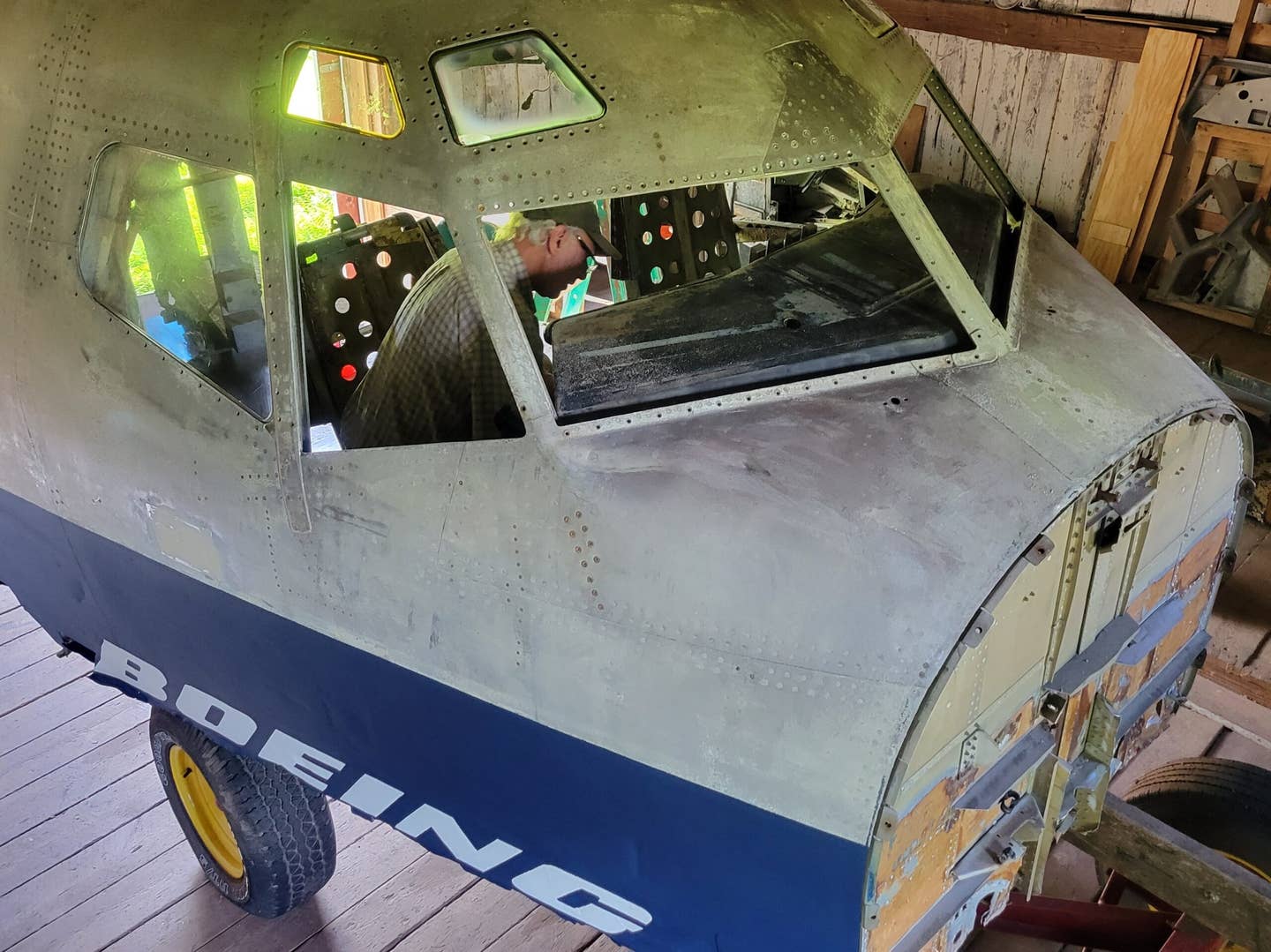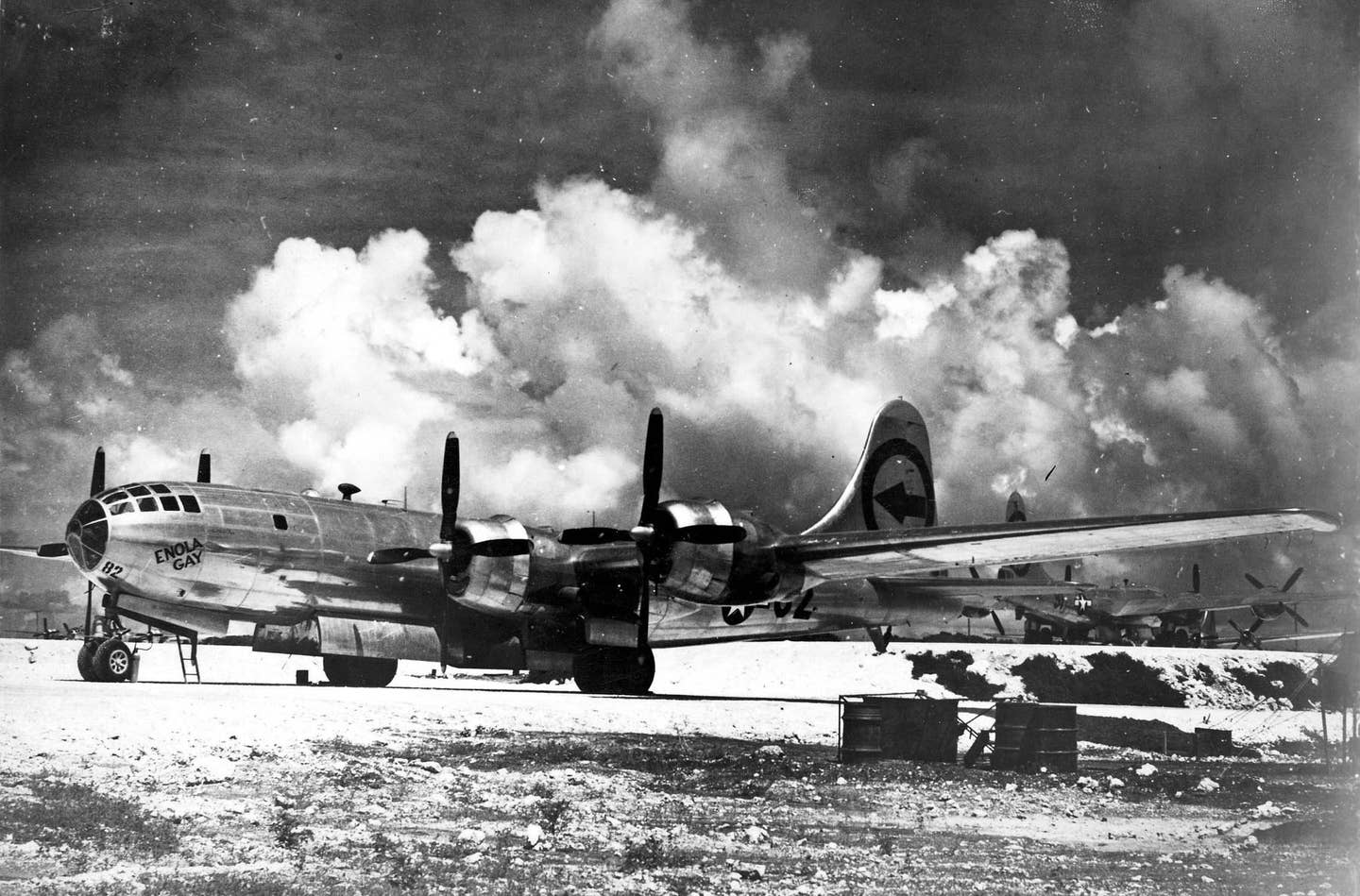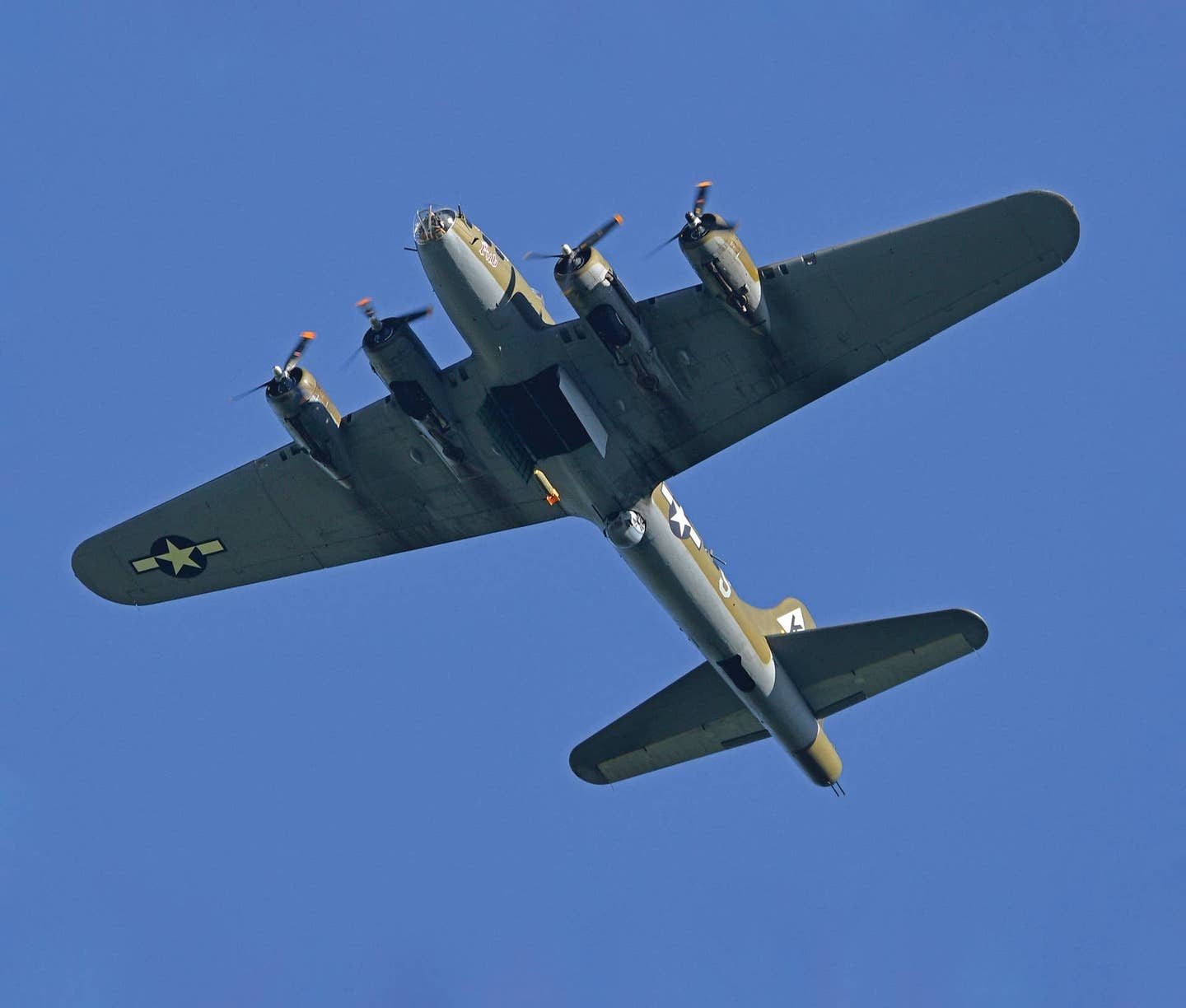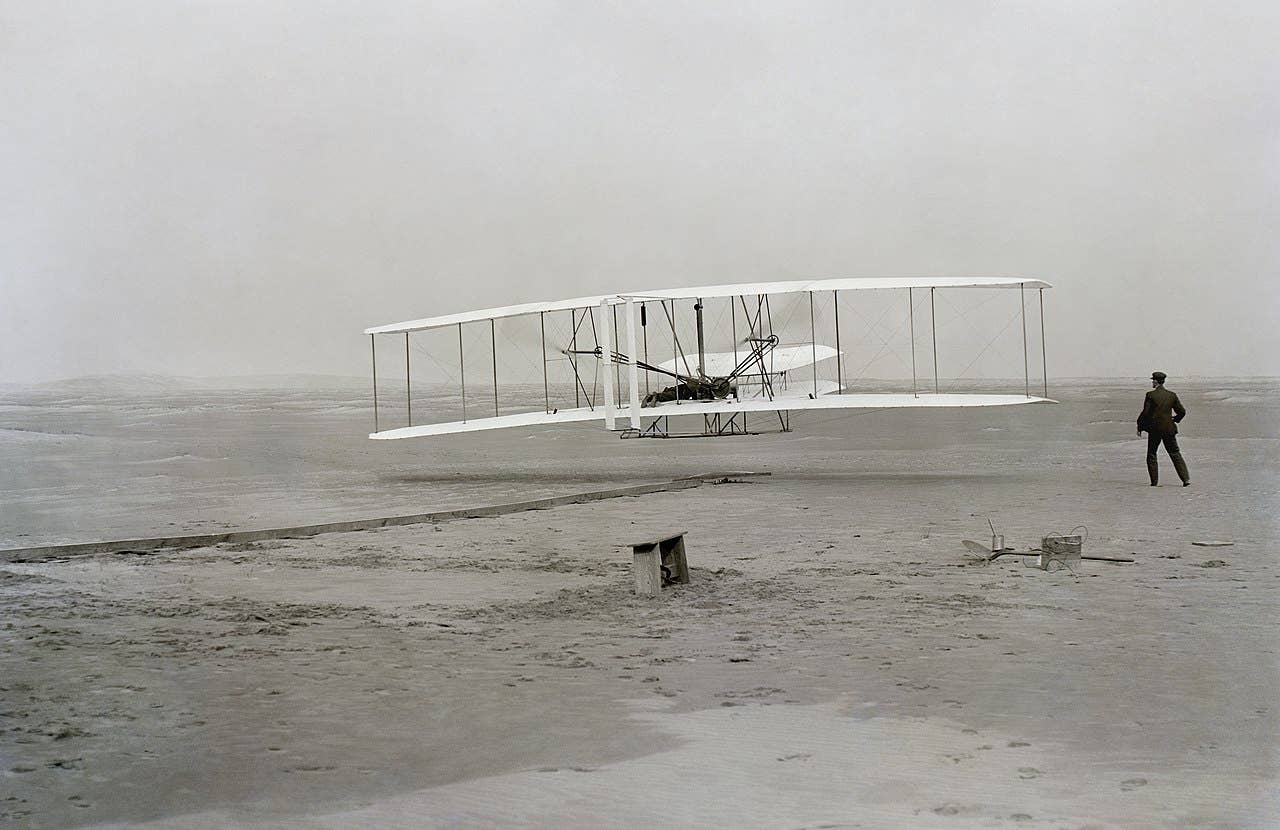Boeing 707 Cockpit Makes a Different Kind of ‘Barn Find’
A Boeing 707 cockpit makes for a different kind of barn find.

Owner Peter Fadis working inside the Boeing 707 cockpit after moving it into the barn. [Credit: Peter Fadis]
The "barn find" is an aviation-enthusiasts dream—you know the one I am talking about. The enthusiast opens the door of a barn in an out of the way place and discovers a (insert enthusiast's favorite vintage aircraft) inside. We. All. Have. It.
Peter Fadis from Bethel, New York, is living a different version of that dream. Since Fall 2020, he has been restoring the cockpit of a Boeing 707—his favorite airplane—in his barn.
Fadis retired from his career as a New York State housing official some five years ago, and sees the cockpit restoration as the perfect project.
"I purchased the cockpit because of its historical significance," says Fadis, a self-described aviation enthusiast. He told FLYING he was bitten by the aviation bug in 1964 at the age of nine when he and his brother and a friend started an aviation club in their basement—airliners were a particular focus.
"Little did I know then that 55 years later I would come into possession of the cockpit of a Boeing 707-436 with a fascinating history that flew with British Overseas Airways Corporation [BOAC], registration G-APFP," he said.
According to Fadis, he acquired the cockpit in 2020. The Boeing 707 had been scrapped 1988, and the cockpit turned into a museum exhibit. The cockpit had been stored outside, and after 30 years it was in rough shape.
"I was fortunate to purchase it and transport it to my barn in upstate New York, where I am happily spending retirement preserving and restoring this marvelous relic of 707 history," he said.
History of Fadis’ 707
According to Fadis, the first flight of Boeing 707-436 was on November 29, 1960. It was delivered to BOAC on December 22 of that same year, and it was one of 37 that were equipped with Rolls Royce Conway engines of more than 1,000 707s and 720s made.
"It was indicated that the aircraft originally cost over 5.5 million dollars new in 1960, and once carried Queen Elizabeth II," Fadis noted. The airliner also made maintenance history in March 1967 when it experienced a nose gear failure at London's Heathrow Airport [EGLL].
"It suffered a turbine disc failure in one of its engines while being ground run, resulting in a disintegrating fire that destroyed the engine and much of the wing," he said. "The airliner was rebuilt with a wing from a TWA aircraft that was taken out of use, and “Foxtrot Papa” was returned to service on April 3, 1973. The repair was performed by 42 BOAC engineers and was described by Boeing at the time as the most sophisticated repair job ever carried out on one of its products."
The airline accumulated more than 51,000 flight hours and eventually was retired and donated to the Franklin Institute. Getting it there required transport by water and land.
"It was cut into three pieces and transported by barge in order for it to be erected and displayed at the museum until it was scrapped in October 1988," said Fadis.
Fascination with the 707
Although he never earned a pilot certificate, Fadis interest in aviation was strong. He took some flying lessons out of Brookhaven, on Long Island, and was a sport parachutist at Stormville, New York, in the 1970s.
He was also a senior member of a local Civil Air Patrol Squadron and served as its Aerospace Education Officer. One of his specialties is the history of the Boeing 707 and its place in the evolution of air travel.
"The Boeing 707 revolutionized commercial air travel," he explained.
The Task at Hand
Restoring the cockpit was no simple task. Years of neglect and the elements had taken their toll. Fadis began the project by removing the original panels, then cleaning them. When he was in high school he worked part time at an aircraft instrument repair shop and he's drawing on those skills as he repairs and refurbishes the instruments. One of the challenges was finding replacement parts for missing items.
"I have been fortunate to obtain some missing gauges from former Boeing 707s for the flight engineer’s upper and lower panels. Sometimes parts are obtained from eBay, others come from collectors."
He says he has found a lot of information in copies of Boeing 707 reference manuals from TWA and American Airlines which are for the 707-300 series, and "was able to get information online for the 707-400 series, which relate to the Rolls Royce Conway engines to name a few," he said.
"I work on it almost daily," he continued. "There isn’t a day that goes by where I don’t receive a delivery of a needed component, avionics indicator, or a manual for reference. I especially enjoy searching and finding old photos of the airliner while it was in service. Who knows? Maybe someday it will grace a spot in a museum."
How the 707 Changed Air Travel
When the Dash 80 which evolved into the Boeing 707 rolled off the assembly line in the early 1950s, the public was skittish about the idea of travel by jet, possibly because of three accidents involving British de Havilland Comets, which, independently of one another, experienced explosive decompression and in flight disintegration, resulting in the deaths of all persons on board.
Boeing had to prove its jet was sturdy, strong and reliable. This was done in August 1955, when Boeing test pilot Alvin M. "Tex" Johnston performed two aileron rolls in the prototype Dash 80 over the Gold Cup, a hydroplane race on Lake Washington, Seattle. The races were held every August as part of a festival known as Seafair. At the time, the International Air Transport Association (IATA) was holding its annual convention in Seattle and a great many of the participants were attending the races.
The copilot on the flight was Jim Gannett. Gannett flew west in 2006, but before that he was a regular at the Saturday morning coffee group at a Seattle area flight school. “Jim Gann” as he was known to his friends, often told the story of the barrel roll. When Johnston told him what he planned to do, Gannett replied "Go ahead Tex, it's your butt."
Johnston performed two aileron rolls surprising everyone below, including Boeing's then-president William Allen, who happened to be in the company of several potential customers who were seeing the jet for the first time. Although not authorized, Johnston's impromptu display of the aircraft's capability apparently did the trick, and orders were placed. Boeing would deliver 856 of the 707s between 1956 to 1978.

Sign-up for newsletters & special offers!
Get the latest FLYING stories & special offers delivered directly to your inbox






